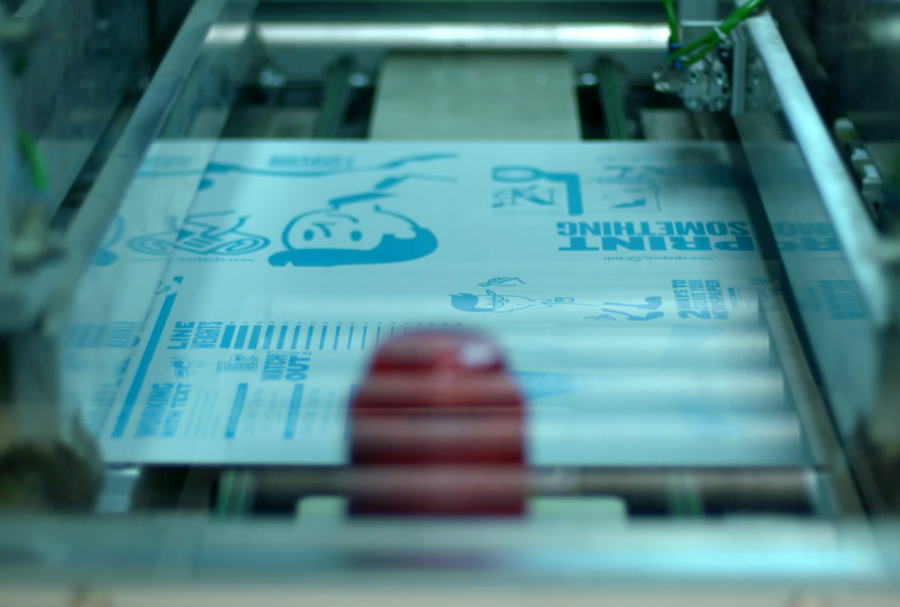Digital broadsheets currently unavailable
Due to circumstances beyond our control, there is a temporary shortage of the 55gsm newsprint we use to print our digital broadsheet...

Have you ever wondered what happens after you order your newspaper? The process can seem like magic: press a button and — presto! – a fresh stack of newspapers is dropped on your doorstep. But in reality it takes lots of inky, moving parts to turn the pixels of a PDF into a newspaper you can hold in your hands.
We’re excited to share a peek into that process with a behind-the-press video.
But first a bit of background. At Newspaper Club there are two types of printing: digital and traditional. We use digital printing for small runs, starting from 1 copy. It’s our most popular method, using toner-based laser printing.
The video below shows our traditional printing process, which is how we print bigger runs (over 500 copies). Traditional newspapers are printed on a web offset press, using offset lithography, just like any daily newspaper. It’s huge, and designed to print thousands of newspapers at a time.
Here’s a speedy rundown of how it works: artwork from your PDF is imaged by laser onto aluminium printing plates. There’s one plate for each of the CMYK, or “process”, colours: cyan, magenta, yellow and black.
These plates never touch the paper. Instead, ink from the plates is transferred onto cylindrical rubber blankets. A massive reel, called a “web”, of newsprint zooms through these cylinders and the ink is offset onto the newsprint – that’s where the term “web offset” comes from.
(Fun fact: a web of newsprint is 15km long – around 2.5x the height of Mt. Kilimanjaro!)
Our keen-eyed press team adjusts ink levels along the way, making sure the artwork in your newspapers looks its best. The whole process happens in a flash – it typically takes less than 30 seconds from the ink going onto the paper to the finished newspaper being boxed, or put on a pallet, for delivery.
It’s a thrilling process to see – and now you can watch it!
Traditional print runs start at 300 copies. Order free samples or get in touch to find out more about the different paper types available.
Due to circumstances beyond our control, there is a temporary shortage of the 55gsm newsprint we use to print our digital broadsheet...
Planning a wedding can be exhausting, but creating a newspaper for your big day should be nothing but fun and exciting. That's why we're...
We are open and printing as usual. We will update this page if anything changes. UPDATED 20 September 2022 EU ORDERS AND INTERNATIONAL...